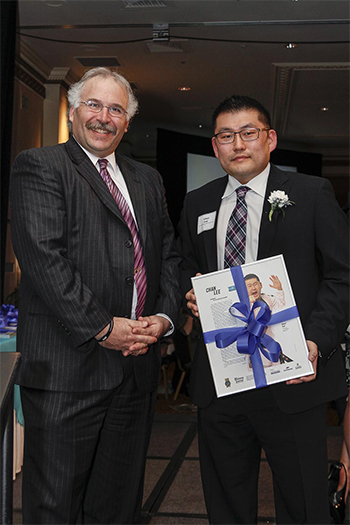Most of us agree that tomorrow’s hopes hinge on this generation’s children and youth. Since kids spend so much time in school, these institutions play a pivotal role in nurturing an intelligent and informed population, fostering positive social skills, and encouraging healthy habits for daily living. That’s a lot for teachers and staff to accomplish during the course of a school day, but, remarkably, many do, year after year.
 The Vision
The Vision
What would happen if every public school in our nation were adopted by a local business? That’s exactly the question Master Chan Lee, president of J. K. Lee Black Belt Academy, asked his academy’s community service team last summer. His family’s five Milwaukee area Tae Kwon Do academies boast 1500 martial arts students. Master Lee frequently challenges them to move beyond kicking and punching to active community involvement. His community service team coordinates projects so people can put kindness into action.
J. K. Lee Black Belt Academy initiated a relationship with Honey Creek Elementary School, a Milwaukee Public School, in early August 2012. Over the course of two hot summer days, over 110 martial arts students participated in workdays at the school. Indoor crews painted walls, dusted woodwork, cleaned glass and surfaces, and did various maintenance projects in the classrooms. Outdoor crews worked in the Environmental Center, a large area set-aside for students to interact with plant and insect life and to observe weather and its effects on nature. Workers pulled weeds from flowerbeds, laid sod, mulched, trimmed shrubs, power-washed picnic tables, and cleaned windows.

Hands On Learning
In September, the teachers and students returned to clean, bright, freshly painted rooms and hallways that practically sparkled. Some of the martial artists come to the school to tutor students in math. Another, a geneticist at the Medical College of Wisconsin, brought a team of colleagues and led the older classes through projects to learn about DNA. Their favorite was using licorice ropes, toothpicks, and gummy bears to create a model of the DNA double helix. Yet another has a biology background, so she enjoyed planting bulbs in the Environmental Center with students from two 2nd grade science classes and a special education class.
